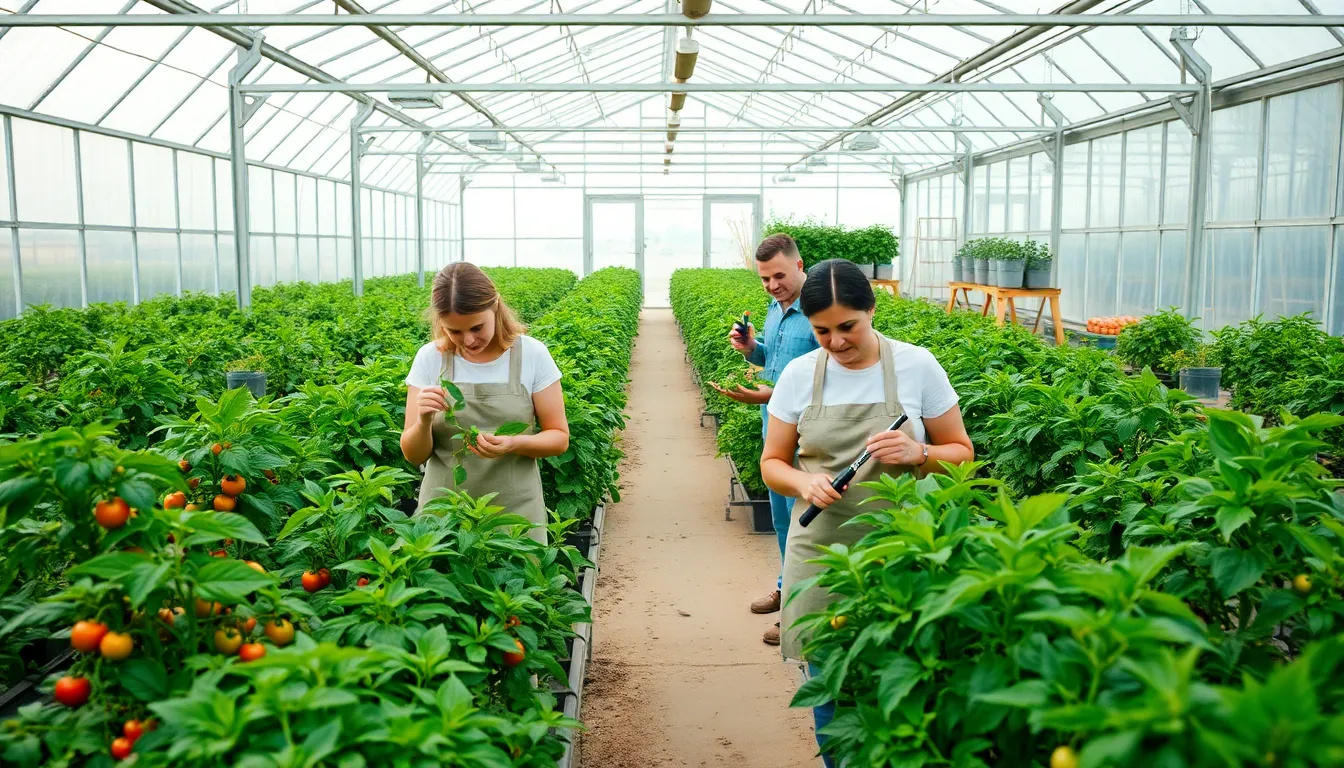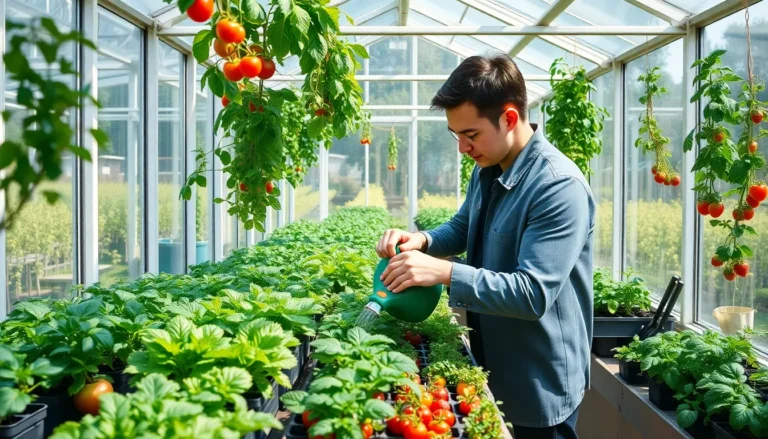Imagine biting into a fresh, juicy tomato in the dead of winter. Sounds like a dream, right? Well, it’s not just wishful thinking. Greenhouse vegetables are redefining how we think about seasonal produce, making it possible to enjoy fresh flavors all year round. From vibrant peppers to crisp cucumbers, cultivating vegetables in a greenhouse offers a world of benefits. And let’s be honest, who doesn’t want to be the friendly neighborhood veggie whisperer? Let’s dig into the intriguing realm of greenhouse vegetables and discover how to make your green thumb very green indeed.
Greenhouse Vegetables

Enhanced Growth Conditions
Growing greenhouse vegetables comes with a bucket full of perks, notably enhanced growth conditions. Greenhouses provide a controlled environment where temperature and humidity can be tailored to meet the specific needs of each plant. In this world of optimal conditions, plants can access ample sunlight while being shielded from harsh weather extremes. Imagine your tomatoes soaking up just the right amount of warmth and moisture, leading to vibrant, succulent fruit. That’s the kind of growth everyone dreams of.
Extended Growing Season
Also, greenhouses extend the growing season significantly. Rather than being restricted to Mother Nature’s whims, gardeners can plan ahead. This means that delicious veggies can be harvested far earlier in the spring and enjoyed much later into the fall. Those winter months? They’re no longer a plant-free zone, allowing for a consistent and reliable food source.
Pest and Disease Management
Pest and disease management also gets a significant boost when growing vegetables in a greenhouse. Enclosed spaces mean fewer intruders, minimizing the chances of infestations. Integrated Pest Management (IPM) techniques can be efficiently employed, ensuring that plants grow healthy and strong with reduced need for harsh chemicals. This not only benefits the plants but also the environment.
Popular Greenhouse Vegetables
Tomatoes
Let’s kick it off with a classic: tomatoes. Known for their rich flavor and versatility, tomatoes are a staple in any greenhouse garden. They thrive in warm temperatures and can be harvested in various varieties, making them a favorite for both casual gardeners and professionals alike. The joy of slicing into a home-grown tomato is unparalleled.
Cucumbers
Then, there are cucumbers. These crunchy delights love the warmth of a greenhouse, leading to crispy, fresh produce that can elevate any salad or sandwich. With proper support, they can be trained to climb, saving space while maximizing yield, talk about a win-win.
Peppers
Don’t forget about peppers. Whether one prefers the sweet crunch of bell peppers or the fiery kick of chilies, greenhouses provide the perfect conditions to cultivate a multitude of pepper varieties, fostering robust flavors and vibrant colors that can brighten up any dish.
Leafy Greens
Finally, leafy greens are a must-have in any greenhouse. Spinach, lettuce, and kale thrive in cooler greenhouse temperatures, allowing for continuous production. This is especially significant for those aiming for healthy meals without having to trek to the store every couple of days.
Best Practices for Greenhouse Vegetable Cultivation
Temperature and Humidity Control
To achieve the best results when it comes to greenhouse vegetable cultivation, it is essential to prioritize temperature and humidity control. This involves monitoring conditions constantly and adjusting as necessary to ensure that plants remain in their optimal growing environments. Tools such as thermostats and hygrometers can make this task significantly easier.
Soil and Fertilization Techniques
Equally important, soil quality can make or break a greenhouse garden. Utilizing rich, well-draining soil mixed with organic fertilizers often leads to flourishing plant life. Understanding the nutritional needs of each vegetable type can optimize growth and yield.
Pest and Disease Prevention Strategies
Pest and disease prevention strategies within a greenhouse shouldn’t be overlooked. This includes regular inspections, cleaning tools and surfaces to minimize the risk of contamination, and introducing beneficial insects. Together, these measures create a nurturing environment where plants can flourish.
Irrigation Methods for Greenhouse Crops
Types of Irrigation Systems
In the world of greenhouse crops, irrigation methods play a pivotal role. Drip irrigation systems are often favored due to their efficiency, delivering water directly to the plant roots and minimizing wastage. This system can be adjusted for different crop needs, ensuring that every plant receives the attention it deserves.
Watering Frequency and Techniques
Also, understanding watering frequency and techniques is crucial. Overwatering can drown plants, while underwatering can lead to stunted growth. Recognizing the signs of distress in plants allows for timely adjustments, transforming a budding gardener into a savvy greenhouse guru.
Harvesting and Post-Harvest Handling
Optimal Harvesting Times
When it comes to harvesting greenhouse vegetables, knowing optimal times is key for flavor and nutritional value. Most vegetables have specific signs indicating they’re ready to pick, whether it’s size, color, or maturity. A savvy gardener will keep a close eye.
Post-Harvest Storage Practices
Once harvested, proper post-harvest storage practices come into play. Cool and dark environments often work best, allowing vegetables to maintain their freshness longer. Avoiding moisture buildup is crucial to prevent decay and spoilage, keeping those delectable treats in peak condition.
Future Trends in Greenhouse Vegetable Production
Sustainable Practices
Future trends in greenhouse vegetable production lean heavily towards sustainable practices. As awareness of environmental impacts grows, more gardeners are looking for eco-friendly solutions, such as employing renewable energy sources, and embracing organic gardening. Going green in gardening is becoming fashionable, and not just for aesthetic reasons.
Technological Innovations
Plus, technological innovations are revolutionizing this field. Advanced sensors, automated climate controls, and hydroponic systems are just a few tools that are now easily integrated into greenhouse setups. These innovations lead to increased efficiency and yields, providing hope for the future of food security.





